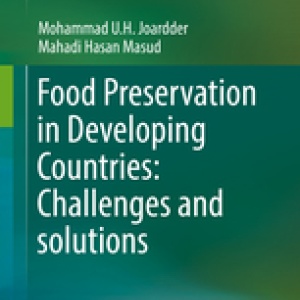
This book identifies common causes of food waste in developing countries and presents examples of successful food preservation methods for different food types in developing countries.
Publisher’s summary
This text identifies common mistakes and challenges in food preservation in developing countries, offering solutions which can play a significant role in reducing food waste in these countries. The book offers critical analysis of current preservation techniques for fruits and vegetables, meat, fish, dairy, and grain, identifying key mistakes and challenges and proposing effective solutions. Feasibility tests for implementing these innovative approaches are also presented. A well-rounded study of the various causes of food waste in developing nations, this book plays a key role in bringing effective food preservation methods to the developing world.
Food Preservation in Developing Countries: Challenges and Solutions studies common food preservation techniques for fruits and vegetables, fish, meat, dairy, and grains, pinpointing the areas where waste occurs due to transportation, contamination, and low quality post processing. Innovative potential solutions are presented, including the feasibility of implementation of these advanced preservation techniques. The book takes a critical look at barriers to proper food preservation in these regions and offers practical solutions which can be implemented in a cost effective and timely manner. With almost one third of the world's food supply wasted each year and 13% of the world's inhabitants going hungry, this is an incredibly important and timely text.
Reference
Joardder, M. U. H. and Hasan Masud, M. (2019). Food Preservation in Developing Countries: Challenges and Solutions. Springer International Publishing, Basel.
Read more here. See also the Foodsource resource How are food losses and waste an environmental concern?







Post a new comment »